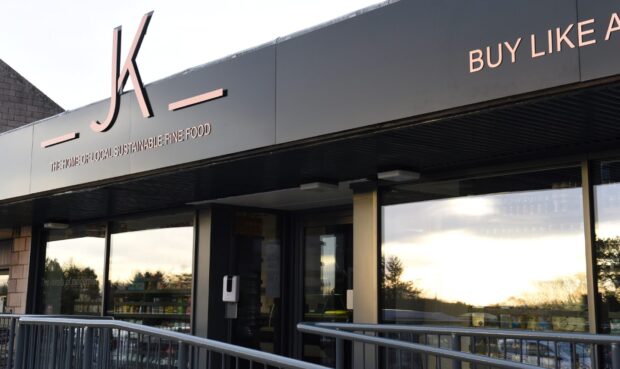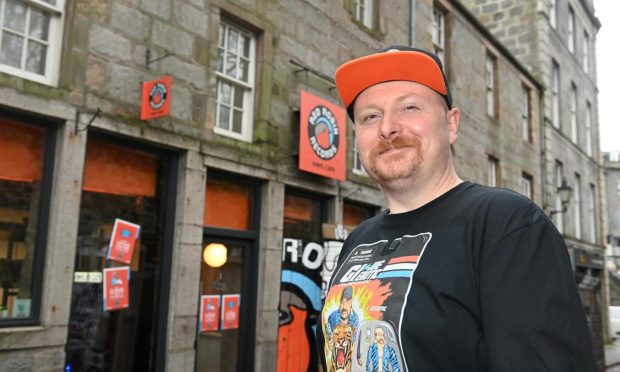Patients across the north and north-east remain in the grip of strong painkillers despite efforts to reduce the country’s dependency.
More than 440,000 prescriptions for opioids have been handed out to people in the north of Scotland in the past five years.
And while significant steps have been taken to curtail the number prescribed such drugs – with the number down 4.4% nationally during that period – Grampian’s reliance has continued to grow.
>> Keep up to date with the latest news with The P&J newsletter
NHS Grampian said the number of daily doses had reduced – meaning the average amount being taken by patients has fallen.
But the number of individuals receiving opioids has steadily increased from 37,304 in 2014 to 38,915 in 2018 – up 4.3%.
Nationally the number of patients receiving such drugs is down 4.4% over the same period.
The drugs, which produce morphine-like effects, can be used to treat anything from headaches to pain following invasive surgery.
However, in recent years there has been growing concern about the addictive nature of these types of painkillers and, in rare instances, their potential to cause deaths.
The US has been gripped by problems with prescription drugs, with opioid overdoses now the leading cause of unintentional deaths in the States.
New figures, obtained by the Press and Journal, reveal there were a total of 443,765 prescriptions handed out to the public between 2014-19 in the Highlands and north-east.
When broken down into individual health boards, Grampian issued 190,980 pain pill prescriptions and Highlands gave out 252,785.
Across Scotland there were 4.68 million drugs given to patients during the same period.
Drugs charities have said the true extent of the addiction problem may be unknown because the dependence is easier to hide than illicit substances.
Last year a study by several Scottish universities, including Aberdeen, found that the number of prescriptions for the strongest opioids, including morphine and fentanyl, had more than doubled in a decade.
In the wake of the study, the Scottish Government confirmed it would review national prescription policies for high strength painkillers.
TV presenter Ant McPartlin, one half of Ant and Dec, is among the high-profile public figures who have revealed their own struggle with painkillers.
Fraser Hoggan, chief executive officer for Alcohol and Drugs Addiction (ADA), said that while the number of people seeking help has not increased, opioids remain an issue – one that many people may not appreciate.
“Some individuals may not recognise they have a problem, or they may associate services such as ours with illicit drug users,” he said.
“It’s a bit like alcohol. There’s no criminality involved and some can function albeit at a reduced level. It can be more easily hidden.
“People might be a bit uneasy about coming forward for help. We would certainly be looking to people to speak to us confidentially.
“But currently it’s about us raising awareness so people know how to recognise they have a problem and so they know they can get help.”
NHS Highland said the health board recognised there were challenges relating to the increased prescribing of opiods and was looking to learn from other health boards.
An NHS Grampian spokesman added: “As an organisation we look at more standardised measures of opioid consumption, including the number of defined daily doses of drugs being prescribed, rather than solely the number of patients who have been given them.
“Between 2012 and 2018, NHS Grampian has seen a slight decrease on this measure despite rising patient numbers.
“Some of the increase in patient numbers will be driven by a growth in our underlying population over the period and, as a result, GP lists have increased during that period.
“So although the number of patients being given these vital pain relief drugs – which are used to treat those suffering from conditions including chronic pain and cancer – has increased, the average amount being taken by patients has fallen.
“Opioids, like all medicines, come with risks and benefits and the important focus is to support the appropriate prescription and use of these medicines.”
The university study was co-authored by Blair Smith, the Scottish Government’s clinical lead on chronic pain.
The Dundee University professor, and pain medicine consultant with NHS Tayside, says there have been great strides made in preventing a prescription pill addiction epidemic like that experienced in America.
Prof Smith, who is head of the population health sciences division at Dundee University, said: “We are very aware of the problem in the States and are keen to prevent it from getting to anything like that stage over here.
“Rates of prescriptions in Scotland have begun to reduce for the first time after many years of year-on-year increases.
“Hopefully we are now beginning to see some benefit of the measures we are taking to reduce these prescriptions.”
At one time such drugs would have been given to cancer patients or people recovering from surgery for a short period of time.
However, they are now offered by GPs for long-term chronic conditions such as arthritis and back and joint pain, which has meant soaring usage.
Prof Smith has said opioids can be useful for pain relief in the short-term but in the long-term have been shown to be ineffective.
He added: “The problem is people will continue to get some benefit from them until they become ineffective and ask for a higher dose.
“That dosage can build-up and build-up and then they’re chasing this relief.
“This can also lead to side effects and people can then mix those up with the original cause of pain.
“It can mean they are more likely to get infections, more likely to get bone fractures and sexual problems – all sorts of quality of life problems that can increase their need for opioids.”
While the percentage of opioid users who become addicted is low, at just 4%, the fact they are so widely used means there are still a significant number who will become dependant.
To speak to someone at ADA confidentially, call 01224 594700.










